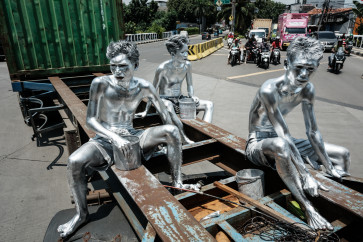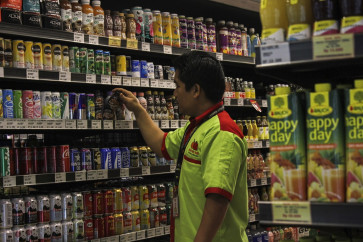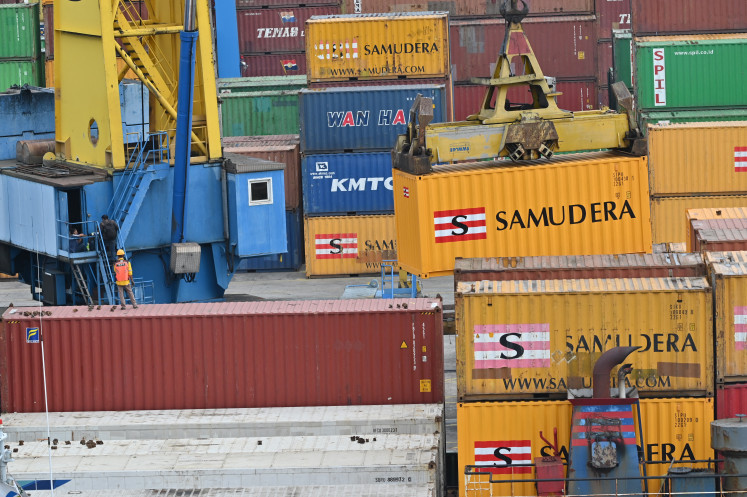Residents to have access to Gelora Bung Karno sports facilities
The main venue for the 2018 Asian Games, the Gelora Bung Karno Sports Complex has undergone a massive renovation to make it a sustainable public space
Change text size
Gift Premium Articles
to Anyone

T
he main venue for the 2018 Asian Games, the Gelora Bung Karno Sports Complex has undergone a massive renovation to make it a sustainable public space.
Deddy Wahjudi, a key architect in the renovation, said the new design meant that the sports stadium, which has existed since the country first hosted the continental multisport event in 1962, would be accessible to residents after the event.
“Our biggest challenge is making people want to approach the buildings, and eventually making the venue become a lively public space,” he said during an interview on the sidelines of the book launch of The 2018 Gelora Bung Karno Architecture at the National Library, Central Jakarta, on Thursday.
Deddy said one way to achieve that was by removing the fences that separate one block from another.
He added that with the previous design of the complex, which incorporated many fences between blocks, make people have to walk or drive a long detour before reaching other blocks.
The separation, Deddy said, only created what in architecture was called “negative space”, unaccessible space that gradually grows untended, dirty and dark.
“If we remove the barriers from the main stadium to Istora, for example, people can easily cross from one block to another. The space between will be regularly cleaned, and therefore will turn into a ‘positive space’,” he said.
Cutting the distance by opening up the fences would also make the sports complex more pedestrian friendly, Deddy added. It would be even more lively, Deddy said, when the food sellers and coffee shops had started operating in the food courts.
He imagined that a person working in nearby SCBD could start the day working out on the running track outside the main stadium, then have breakfast in the soon-to-open food court in Istora, take a bath also within the sports complex area, before heading to SCBD to begin work.
Deddy expects the design will give the sports complex life after the two-week-long Asian Games, rather than it being abandoned afterwards, as has been the case with Olympic venues in Beijing and Rio de Jainero.
Apart from making sure the sports complex will be a sustainable public space, Deddy said one of the main challenges in the reconstruction was to improve the complex to meet international standards while maintaining its heritage value.
GBK was built when Indonesia was set to become the host of the 4th Asian Games.
The complex was completed on July 21, 1962, only a month before the Games started.
Many parts of the complex are heritage sites, which means the architects have to find a way around them to perform the reconstruction.
“For example, the tribune of the aquatic stadium is a heritage site. However, we have to add two swimming lanes and put a roof above to maintain the water temperature,” Deddy said. “We have to carefully measure the additional swimming lanes and roof poles so that the reconstructions will not damage the tribune.”
In international competitions, the water temperature must be maintained at 27 degrees Celsius. Without a roof, the water temperature in the swimming pool could be unpredictable, which would invalidate the swimming records.
“However, I think we did a great job to maintain the classic design while still meeting international requirements. Visitors can still see the distinct vintage designs on the heritage sites,” he said.
Deddy added that the 2018 Asian Games were a big achievement for Indonesian architects, as all of the architects involved in the projects are Indonesian.
“I am proud to be a part of this project, as this way Indonesian architects can contribute to global architectural development,” he concluded.









